Optimizing Surgeon Preference Cards for ROI, Efficiency, and Exceptional Patient Care
Surgeon preference cards might seem like a straightforward part of operating room (OR)
logistics, but their impact on hospital operations is profound. These cards detail the instruments,
supplies, and preparation steps needed for each procedure, serving as a guide to ensure surgeries
run smoothly. However, outdated or inaccurate preference cards can lead to wasted resources,
inefficiencies, and even compromised patient care.
With surgical services being the primary revenue generator and cost center for most hospitals,
optimizing surgeon preference cards becomes a game-changer. From reducing waste to
improving operating room efficiency and patient outcomes, the benefits are undeniable. Facilities
that prioritize preference card optimization can see returns on investment (ROI) within 60 to 90
days, saving upwards of $1 million annually through better supply chain management, improved
workflows, and reduced operative time.
If you're ready to unlock these gains and address the common inefficiencies in your OR, read on.
Below, we’ll pinpoint the challenges hospitals face with surgeon preference cards and outline a
proven eight-step plan to solve them.
The Hidden Cost of Outdated Surgeon Preference Cards
When surgeon preference cards are inaccurate, they create a ripple effect of inefficiency
throughout the surgical process. From wasted inventory to scheduling conflicts and
communication breakdowns, the issues pile up quickly. Here are five common problems
hospitals encounter with their preference cards:
Five Common Problems with Surgeon Preference Cards
1. Overwhelming Number of Cards: Many hospitals juggle thousands of preference cards,
making updates a daunting and time-consuming process.
2. Low Collaboration Between Teams: Miscommunication between OR staff, supply
chain teams, and sterile processing departments (SPD) leads to missing data and
inconsistent processes.
3. Variable Formats and Content: Discrepancies in how cards are structured across
specialties cause confusion from picking supplies to room setup.
4. Lack of Continuous Improvement: Without regular audits or a formal update process,
preference cards quickly become outdated and unreliable.
5. Outdated Systems: Many electronic health record (EHR) systems aren’t designed to
effectively manage surgeon preference cards, leaving teams reliant on inefficient manual
processes.
These challenges don’t just hamper day-to-day operations; they drive up costs and reduce staff
and patient satisfaction.
The ROI of Optimizing Surgeon Preference Cards
Addressing these challenges is no small effort, but the financial and operational payoffs are
immense. Hospitals that take a structured approach to surgeon preference card optimization often
achieve significant results, including:
Savings of $1 million or more in the first year by reducing supply waste, improving
inventory management, and increasing operative efficiency.
Better staff satisfaction by providing surgical teams with reliable tools that reduce
frustration and miscommunication.
Enhanced patient safety by eliminating procedural inconsistencies and cutting
unnecessary delays.
The question isn't whether optimizing your preference cards is worth it. The real question is
whether your hospital can afford not to take action.
A Step-by-Step Guide to Surgeon Preference Card
Optimization
Whether you’re managing a small community hospital or a large healthcare system, the
following eight steps can guide you toward a successful preference card improvement initiative:
1. Establish Clear, Measurable Goals
Define what you hope to achieve from this initiative. Goals could include reducing supply chain
waste, improving staff efficiency, or lowering surgery setup times. Use baseline data from your
surgical supply usage and operative performance to set specific, quantifiable targets.
2. Build a Cross-Functional Team
Engage team members from across the organization, including OR staff, sterile processing, and
supply chain managers. Include frontline team representatives like nurses and surgical
technicians to ensure all perspectives are considered.
3. Standardize Card Formats and Content
Agree on a standardized format for all preference cards, regardless of surgical specialty. Define
what information each card should include and standardize naming conventions.
4. Leverage Data to Identify Gaps
Review existing data from SPD and supply chain systems to identify inefficiencies. Metrics such
as unused instruments, returned supplies, and missing items can help you pinpoint areas for
improvement.
5. Prioritize High-Value Cards
Focus first on preference cards for high-volume or high-cost surgeries. Procedures involving
costly implants or customized trays are excellent starting points, as improvements here will yield
immediate savings.
6. Train and Communicate
Explain the "why" behind this effort to everyone involved. Provide practical training for new
processes and tools. Celebrate early wins to build momentum and maintain buy-in from the team.
7. Implement a Continuous Improvement Process
Set up a clear system for ongoing preference card updates. Schedule regular audits and establish
a feedback loop so that staff can report inaccurate or outdated cards.
8. Adopt Technology Solutions Like PREFcards
Modern tools like PREFcards simplify preference card management using smart software
solutions. PREFcards not only provide intuitive management tools but also offer robust reporting
and analytics to help hospitals stay ahead of inefficiencies.
These steps form the foundation for transforming your OR operations and achieving long-term
success in preference card management.
How PREFcards Can Help
PREFcards is uniquely designed to address the toughest challenges hospitals face when
managing surgeon preference cards. Whether you’re dealing with outdated EHR systems, team
collaboration hurdles, or inefficiencies in surgical supply chain management, PREFcards delivers
proven solutions.
Why Choose PREFcards?
Smart Automation: PREFcards streamlines updates and eliminates manual errors.
Data-Driven Insights: Gain real-time analytics on supply usage, costs, and
inefficiencies.
Seamless Integration: PREFcards integrates smoothly with existing systems, reducing
disruption.
Ease of Use: Designed with frontline staff in mind, PREFcards makes managing
preference cards simple and effective.
Time to Transform Your Operating Room
Outdated surgeon preference cards are costing your hospital more than just money. They impact
staff efficiency, patient care, and the overall success of your surgical services. But with a clear
plan and the right tools, you can turn these challenges into opportunities for growth and
improvement.
Take the first step toward operating room excellence today. Contact us at
info@prefcards.com or visit PREFcards.com to learn how our smart solutions can
transform your hospital’s OR efficiency and financial health.
Don’t wait for inefficiencies to escalate. Your path to better ROI, smoother operations, and
improved patient care starts now.

